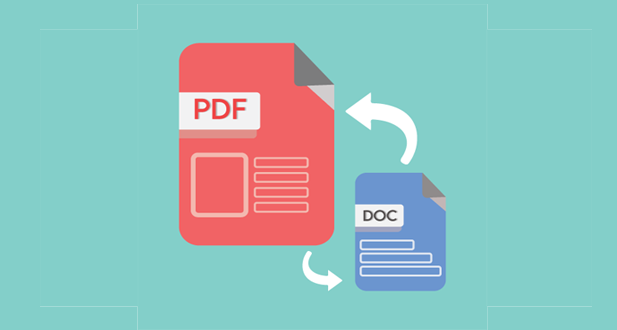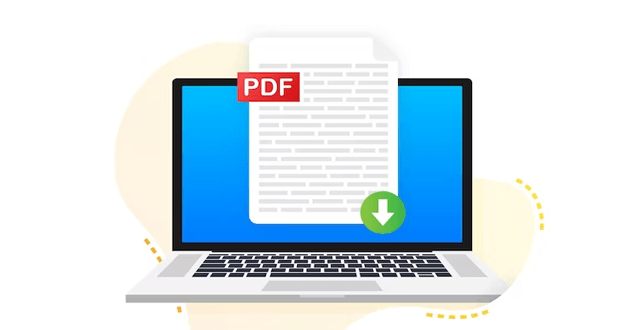About Pdf to doc
PDF (Portable Document Format) is a file format used to present and exchange documents reliably, independent of software, hardware, or operating system. It was developed by Adobe in the early 1990s and is now an open standard maintained by the International Organization for Standardization (ISO).
The key feature of PDF is its ability to preserve the visual formatting and layout of a document, including fonts, images, and graphics, regardless of the device or software used to view it. This makes it an ideal format for sharing documents that need to be printed, such as contracts, legal documents, and reports.
PDF files are typically created using software applications such as Adobe Acrobat or Microsoft Word. These applications can convert documents into the PDF format, which can then be shared electronically via email or file-sharing platforms.
One of the significant advantages of PDF is its security features. PDF documents can be password-protected, preventing unauthorized access or changes. Additionally, PDF documents can be digitally signed, providing a secure and legal way to authenticate the identity of the signer and verify the integrity of the document.
PDF files are also versatile and can be used for a wide range of purposes beyond simple document sharing. For example, PDF forms can be used for online applications, surveys, or registration forms, and interactive PDFs can include multimedia elements such as videos, audio, and hyperlinks.
Another benefit of PDF is that it is compatible with many different platforms and devices, including desktop computers, laptops, tablets, and smartphones. There are also many free PDF viewers available, such as Adobe Reader and Foxit Reader, that allow users to view and print PDF files without needing to purchase expensive software.
However, one of the main drawbacks of PDF is that it can be challenging to edit or manipulate the content once it has been converted to the format. While some software applications, such as Adobe Acrobat, can be used to make minor changes to a PDF file, significant changes may require the original document to be edited and then converted to PDF again.
Another potential issue with PDF is its file size. PDF files can be larger than other formats, such as JPEG or PNG, which can make them more challenging to send or store. However, there are ways to reduce the size of PDF files, such as compressing images and removing unnecessary metadata.
PDF is a widely used file format that offers many benefits for document sharing and security. Its ability to preserve the formatting and layout of a document makes it ideal for sharing contracts, legal documents, and reports, and its security features make it a secure way to authenticate documents. While it can be challenging to edit or manipulate PDF files, it is a versatile format that can be used for a wide range of purposes beyond simple document sharing.
About Docs
The term “docs” can refer to a wide range of documents, depending on the context in which it is used. In general, however, “docs” are typically documents that contain information or instructions related to a particular topic, task, or process.
One common type of “docs” is documentation. Documentation refers to written materials that provide information about a particular product, service, or system. This can include user manuals, technical specifications, FAQs, and other materials that help users understand how to use a particular product or service. Documentation is essential for many products and services, as it helps users get the most out of them and can also help reduce the likelihood of user errors or accidents.
Another type of “docs” is business documents. These include a wide range of documents used in business operations, such as contracts, agreements, invoices, and financial statements. Business documents are essential for managing and recording business transactions and maintaining legal compliance.
In addition to documentation and business documents, “docs” can also refer to other types of documents related to specific industries or fields. For example, in healthcare, “docs” can refer to medical records, patient histories, and other medical documents. In legal professions, “docs” can refer to legal briefs, court documents, and other legal materials.
The term “docs” can also refer to digital documents, such as those stored on a computer or in the cloud. These can include everything from Word documents and PDFs to spreadsheets and presentation slides. Digital “docs” are becoming increasingly important in today’s digital age, as more and more information is stored and shared electronically.
One of the benefits of digital “docs” is that they can be easily shared and collaborated on. This is particularly useful in business settings, where multiple people may need to access and work on the same document. With digital “docs,” team members can easily make changes and additions in real-time, without having to worry about sending updated versions back and forth.
Another benefit of digital “docs” is that they can be easily searched and organized. With the use of keywords and tags, it’s possible to quickly find the document you need, even if you don’t remember its exact title or location. This can save a lot of time and frustration, particularly when dealing with large volumes of documents.
Despite the benefits of digital “docs,” there are also some potential drawbacks to consider. For example, there is the risk of data breaches and other security issues, particularly if sensitive information is being stored or shared. It’s important to take appropriate security measures, such as using strong passwords and encryption, to protect your digital “docs” from unauthorized access.
In summary, “docs” refer to a wide range of documents, including documentation, business documents, and industry-specific documents. With the rise of digital technology, digital “docs” have become increasingly important, offering benefits such as easy sharing and collaboration, as well as improved organization and searchability. However, it’s important to be aware of the potential security risks associated with storing and sharing digital “docs,” and to take appropriate measures to protect your information.
Pdf to doc converter
PDF (Portable Document Format) and DOC (Microsoft Word Document) are two of the most commonly used file formats for documents. While PDFs are often used to preserve the layout of a document, DOCs are used for editing purposes. As such, it is common to convert a PDF document to a DOC file for editing and formatting purposes. There are various tools available for converting PDF to DOC, and in this article, we will discuss some of the most popular ones and their features.
Adobe Acrobat Pro DC: Adobe Acrobat Pro DC is a popular tool for creating, editing, and converting PDF files. One of its key features is the ability to convert PDF to DOC. With Adobe Acrobat Pro DC, users can convert a PDF file to a Microsoft Word document with just a few clicks. The converted document retains the original layout, fonts, and formatting, making it easy to edit. The software also supports batch conversion, allowing users to convert multiple files simultaneously.
Nitro Pro: Nitro Pro is another popular tool for converting PDF to DOC. The software comes with a user-friendly interface that makes it easy to convert PDFs to Word documents. Nitro Pro allows users to convert PDFs to DOC, DOCX, and RTF formats. The software also supports batch conversion, allowing users to convert multiple files at once. Nitro Pro also includes tools for editing, reviewing, and collaborating on documents.
Smallpdf: Smallpdf is a popular online tool for converting PDF to DOC. The software is free to use and does not require any downloads or installations. Users can simply upload their PDF files to the Smallpdf website and convert them to Word documents. Smallpdf also supports batch conversion, allowing users to convert multiple files simultaneously. The software retains the original formatting and layout of the PDF document, making it easy to edit.
Zamzar: Zamzar is another popular online tool for converting PDF to DOC. The software is free to use and does not require any downloads or installations. Users can simply upload their PDF files to the Zamzar website and convert them to Word documents. Zamzar supports batch conversion and can convert PDFs to a range of other formats, including DOCX, ODT, and RTF. The software also includes tools for compressing, resizing, and converting images.
UniPDF: UniPDF is a free tool for converting PDF to DOC. The software is lightweight and easy to use. UniPDF allows users to convert PDFs to Word documents without losing the original formatting and layout. The software also supports batch conversion, allowing users to convert multiple files at once. UniPDF can also convert PDFs to other formats, including HTML, TXT, and JPG.
converting PDF to DOC is a common task for those who need to edit or format documents. There are various tools available for this purpose, ranging from free online tools to paid software with advanced features. The choice of tool will depend on the user’s specific needs and requirements. However, it is important to choose a reliable tool that can convert PDFs to Word documents without losing the original formatting and layout.
Conclusion
In conclusion, PDF to DOC converters are useful tools that allow users to convert PDF files to editable Microsoft Word documents. They can be particularly helpful when you need to edit or modify the content of a PDF file but do not have access to the original document. However, it’s important to note that the conversion process may not be perfect and may result in some formatting errors or discrepancies. It’s also important to ensure that you have the legal right to convert the PDF file to a DOC format, especially if the file contains copyrighted material. Overall, PDF to DOC converters can be a useful tool for certain situations, but it’s important to use them carefully and appropriately.
Frequently Asked Questions
There are several reasons you might need to convert a PDF to DOC, such as if you want to edit the content of a PDF file, or if you want to make it easier to share and collaborate on a document with others.
Most PDF-to-DOC converters work by allowing you to upload your PDF file to their website, and then select the format you want to convert it to (in this case, DOC). The website will then process the conversion and provide you with a download link for the converted file.
There are both free and paid PDF to DOC converters available. Some free options may have limitations or watermarks on the converted file, while paid options typically offer more features and better quality output.
Yes, some PDF to DOC converters have OCR (optical character recognition) technology that can recognize and convert scanned text in PDFs to editable text in DOC format.




